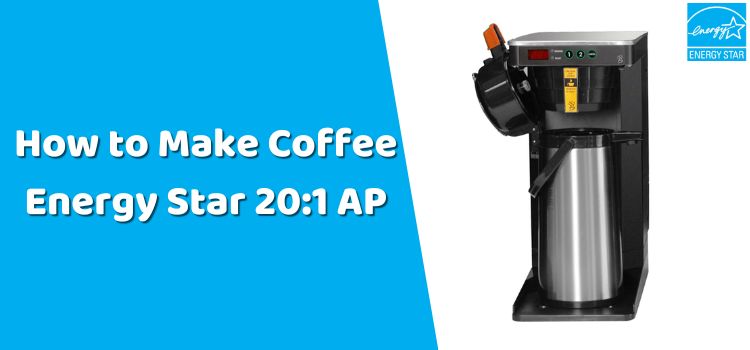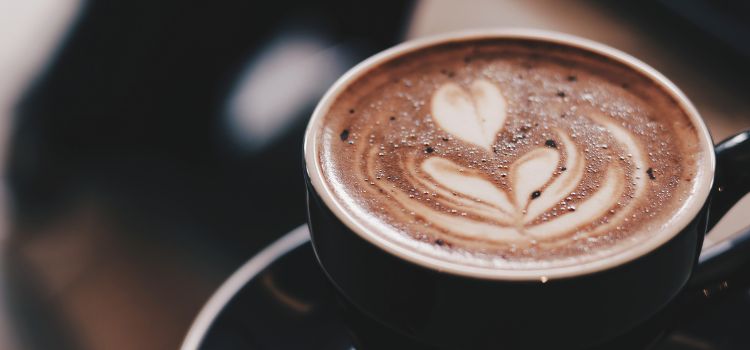As an Amazon Associate, I earn from qualifying purchases

The Energy Star 20:1 AP method is an ideal option for coffee aficionados who want the best of both worlds between taste and sustainability. The perfect coffee to water ratio paired with energy-conserving practices, this method is the way to go for amazing coffee while keeping Mother Earth happy. So what is the Energy Star 20:1 AP method, why is it a game-changer, and how can you master it in the comfort of your own home?
The Energy Star 20:1 AP term sits on 2 concepts — energy-efficient brewing and the ideal coffee to water ratio of 20 to 1. The “AP” stands for Aeropress, which is a well known coffee maker that enhances the accuracy and extraction of flavors during the brewing process. It enables a balanced cup, devoid of excessive bitterness, and a reduction in energy use.
Why the 20:1 AP Ratio Energy Star
There are a few reasons that the 20:1 formula has gained popularity among the environmentally conscience coffee drinkers:
- Flavor Balance: This amount makes for a cup that isn’t too weak or overwhelming while being distinctly flavored.
- Less Bitter: In minimal coffee, over-extraction is less likely to take place, which leads to a bitter taste.
- Sustainable: Another advantage of the 20:1 is it also uses less coffee, which means that less adversarial coffee consumption waste and resource consumption.
Explaining Energy Star coffee makers
If you want to consume less energy, you can opt for an Energy Star-certified coffee maker. With energy-saving features like auto-shutoff and programmable settings with technology that maintains your drink’s temperature without constant energy surges to your serving container, these machines have it all.
Key Features to Look for:
- Auto Shut-Off: Once brewed, the machine will automatically shut down to save power.
- Programmability: Program brewing times ahead of time so that your machine only draws power when it needs to be busy.
- Temperature Control: Accurate temperature regulation prevents excess energy consumption due to overheating.
An Energy Star coffee maker complements the 20:1 AP method with these features, making your day as much sustainable as ever!
How to Brew Coffee with Energy Star 20:1 AP
Ready to brew? So, here is what you need and the steps for brewing it right.
Essential Tools:
- Aeropress
- Coffee: 20g, freshly ground to a medium texture
- Water: 400 grams, heated between 195°F – 205°F
- Digital Scale: Use for accurate measuring
- Coffee Maker (optional, but best if you care about speed): For preheating the water
Brewing Process:
- Measure the Coffee and Water: 20g Coffee, 400g Water This ratio requires precision.
- Heat Water: Heat your filtered water to about 195°F — 205°F. An Energy Star coffee maker can preheat the water with generally low energy requirements.
- Set up Aeropress: Get ready and rinse out your Aeropress filter by running it under hot water and place it overtop of your mug.
- Coffee Grounds: Pour the 20g of coffee powder water into the Aeropress chamber!
- Add hot water: Pour water over the coffee grounds and gently stir to ensure all coffee grounds are saturated
- Steep and Press: Allow the coffee to steep for around one minute, then push down slowly to extract.
And there you have it! Organic coffee that make a perfectly balanced cup.
Tips for Enhancing Experience: Coffee Energy Star 20:1 AP

- Use Fresh Coffee
- When you grind coffee right before you brew it, it retains most of the aroma and flavour, creating a richer cup. Or, if you really want to level up, buy a burr grinder.
- Experiment with Temperature
- A good starting point is in the 195°F – 205°F range, though you may vary within this range to taste.
- Optimize Water Quality
- Water free of chlorine and other contaminants enhances the purity of your coffee flavor.
- Fine-Tune Brewing Time
- You can brew a bit longer (a couple seconds) for a more full extraction in a stronger cup.
The Importance of Energy Star Certification in Coffee Brewing
Coffee machines that consume a lot of energy can result in high electricity bills and environmental destruction. For the regular brewers, this is a significant saving considering that Energy Star-certified coffee makers consume 50% less energy. This is one tiny step in the right direction towards cutting carbon footprint (an Aeropress + Energy Star-certified hot water machine).
Common Mistakes to Avoid
Even those who brew coffee and are regular users can fall into traps of the following nature. Some pitfalls you should be careful of include:
- Stale coffee: Coffee goes stale pretty fast, so always use fresh beans.
- Wrong Ratio: Using a too high or too low ratio leads to weak coffee or coffee that is too bitter.
- Water that’s too hot: Boiling water can burn the coffee grounds, so always go just below boiling.
Conclusion
The Energy Star 20:1 AP method has a harmonious balance of flavor, sustainability and energy efficiency. With the perfect ratio of coffee to water and an Energy Star coffee maker, you now take sip after sip of a perfectly balanced, eco-friendly brew. Besides elevating the quality of your coffee, it helps in saving environment.
FAQs
How to use Newco coffee machine?
Place a filter in the brew basket, add coffee grounds, and slide the basket into its holder. Position an empty decanter or airpot under the spout. For pour-over models, pour water into the reservoir; for plumbed-in models, ensure the water supply is connected. Activate the brew cycle by pressing the “Brew” button or switch.
What is the 20:1 ratio in coffee brewing?
The 20:1 ratio in coffee brewing means using 20 parts water to 1 part coffee by weight, resulting in a milder, less concentrated brew compared to standard ratios like 15:1 or 16:1.
Is the 20:1 ratio suitable for all coffee types?
The 20:1 ratio may not be ideal for all coffee types or brewing methods, as it produces a lighter brew. It’s recommended to start with a standard ratio, such as 1:15 to 1:18, and adjust based on personal taste preferences and the specific coffee bean characteristics.
As an Amazon Associate, I earn from qualifying purchases